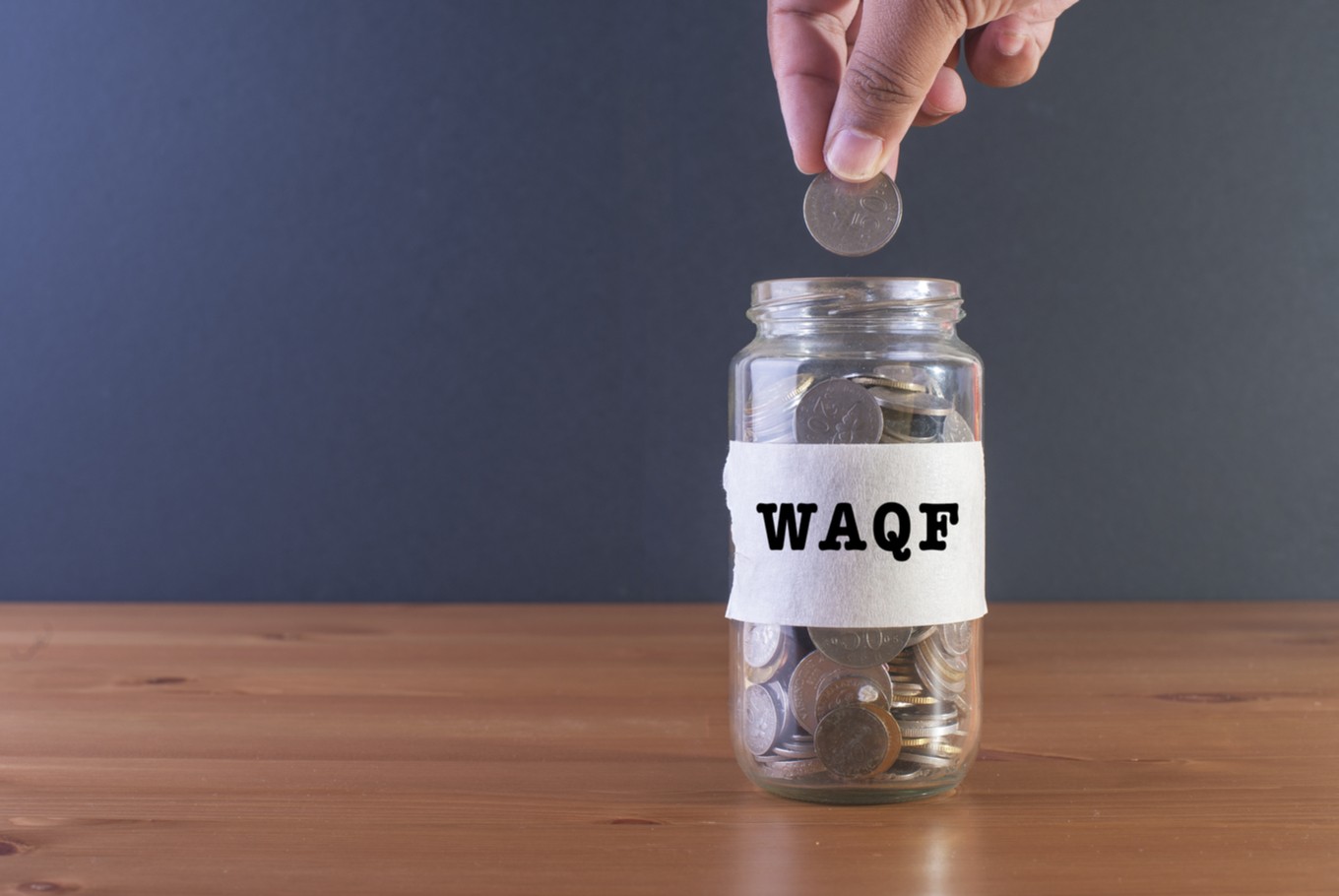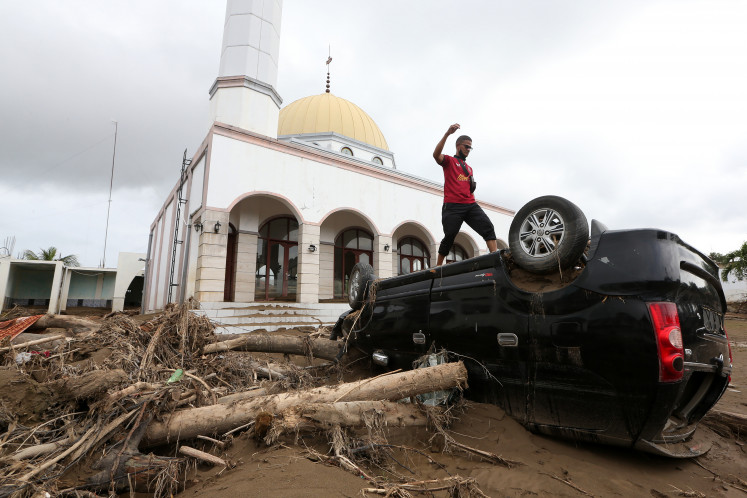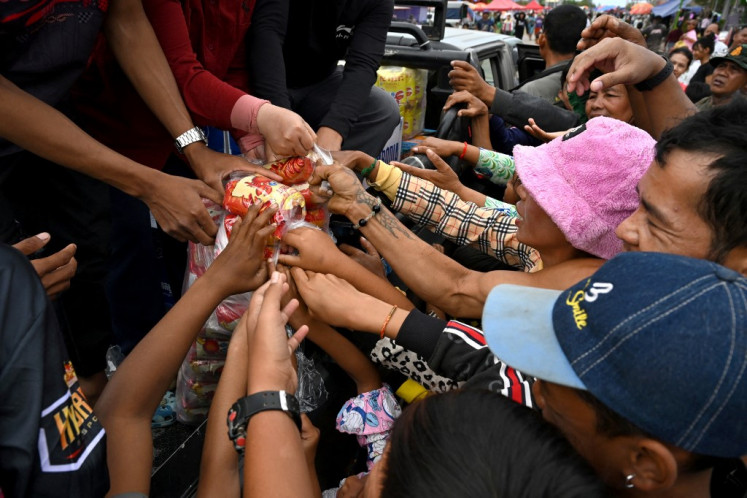Popular Reads
Top Results
Can't find what you're looking for?
View all search resultsPopular Reads
Top Results
Can't find what you're looking for?
View all search resultsEmbracing waqf as a lifestyle in digital era
Change text size
Gift Premium Articles
to Anyone
I
ndonesia Wakaf Summit (IWS) 2019, organized by Dompet Dhuafa on March 5, has brought together important waqf stakeholders in the country such as National Committee for Shariah Finance (KNKS), the directorate of zakat and waqf empowerment, the Religious Affairs Ministry, and Indonesian Waqf Board (BWI) to deliberate on finding an effective ways to transform and develop waqf in the so called digital era.
It is interesting to note that, chairman of BWI, Muhammad Nuh in his opening speech called for embracing waqf as a lifestyle as one of the solution to ensure the transformation and the optimization of waqf potentials in Indonesia.
In reading this news, my mind was travelling back to a forum in Banda Aceh, last year, whereby I also called the audience to do the same.
Perhaps, as I shared with the audience at that forum, let’s reflect and look around us of the massive waqf contribution in our country. Having a clear picture of massive contribution of waqf, in the past, would make easier for us to embrace the abovementioned idea.
Take Aceh for example, majority of mosques, meunasah (other than for congregational prayer, this place is also known as center and source of civilizational development for the Acehnese) and schools were established collaboratively by the community through crowd funding which is called meuripee in local language.
The community donated whatever amount of money they have to purchase a piece of land which later utilized to build mosques, meunasah or schools, again to be financed through crowd funding. All of these assets were registered as waqf properties and that was one of the reasons we can easily find waqf assets all over the place in that province. I believe, similar situation also occurred and practiced nationwide.
Even before the existence of Indonesia, our elders have shown us how they embraced and utilized waqf to finance the establishment of waqf-houses in Mecca. According to Snouck Hurgronje,a professor and Dutch colonial official, there were many waqf-houses in Mecca which belonged and named after the region for which they establish. Among the famous waqf-houses included those for Aceh, Banten and Pontianak.
He also mentioned that in 1890 there were an Acehnese who was about to travel to Aceh to make further collections to establish waqf-house. This could be an indication that the waqf tradition in Aceh particularly and in Indonesia generally was already strong at that period of time. One of the waqf-houses is now known as Bait al- Asyi Waqf in Mecca which still giving the benefit to pilgrims from Aceh in the form of cash as supplementary money for accommodation.
I also took the opportunity, at the forum, to further highlight the role of waqf - an item dear to my heart - in educational sector since there were many academics and students present. This can be observed through the establishment of waqf foundation in various educational institutions across Indonesia which still exists and continue to play a key role in respective region. To name but a few, Waqf Board of the Indonesian Islamic University (BW-UII) Yogyakarta in 1945, Waqf Board Sultan Agung Foundation (YBWSA) Semarang which originally establish in 1950, Waqf Foundation of the Indonesian Muslim University (YW-UMI) Makassar in 1955, Gontor Waqf Foundation which was formalized in 1958 and Almuslim Peusangan Foundation in 1929 which now running Almuslim University in Matang Geulumpang Dua, Bireuen, Aceh and Almuslim Islamic Institute (IAI) also in Matang Geulumpang Dua.
The glorious records of waqf in the past should be taken as a source of inspiration for us to revive this sector again. In doing so, we should embrace waqf as our lifestyle whereby we will be obsessed with waqf and would not be happy if we are not able to contribute or to set a portion of our assets as waqf.
In order to successfully making people embracing waqf as their lifestyle, continuous effort to create waqf awareness should be done by all stakeholders ranging from waqf authority to academicians and waqf practitioners. This can be done through various efforts like conducting waqf talk, producing as many writing as possible on waqf, utilising social media in disseminating waqf concept and ideas to reach wider audiences, and conducting as many event as possible relating to waqf.
The systematic efforts on creating waqf awareness will succeed if it has reached the level of critical mass. As far as I am concerned, continuous and concerted efforts on waqf will take two years to reach at critical mass whereby people will be obsessed with waqf. Hence waqf will easily become a mainstream.
Why two years? This is based on my observation on how Mahathir Mohamad going around and explaining to the people on why they need to change the government in order to save Malaysia. Since 2016, Mahathir travelling across Malaysia giving a speech and explaining to people that corruptions scandals like 1MDB will bring disaster to Malaysian economy and without changing the government no remedy will works as the leader of the government himself are at the center of the scandal.
Combine with other efforts from the opposition party, we were witnessing that on May 9, 2018 for the first time in Malaysian history, the opposition led by Mahathir won the election at the federal level. This historic moment can only achieve after two years of herculean efforts by Mahathir Mohamad and his Pakatan Harapan.
This is why I believe that, after two years, with the hard work and concerted efforts from waqf stakeholders, the community will embrace waqf as their lifestyle and making waqf as a mainstream.
As a closing remarks on how we know that waqf has become a lifestyle and mainstream, let us observe the essence of waqf in Turkey, during Ottoman government, which was captured in the beautiful words of Birol Baskan, a Turkish writer, when he noted that “a person would have been born in a waqf house, slept in a waqf cradle, eaten and drunk from waqf properties, read waqf books, been taught in a waqf school, received his salary from a waqf administration, and when he died, placed in a waqf coffin and buried in a waqf cemetery.”
***
The writer is the founder of the Center for Study and Consultancy of Waqf, Jeumpa D’Meusara (JDM)











